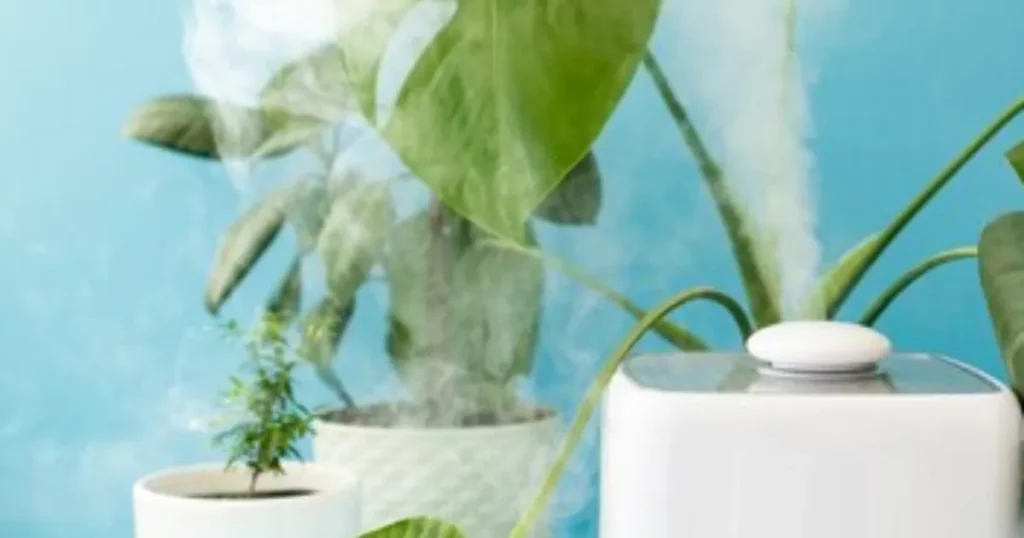If you are searching about the potential harm that do air purifiers harm house plants then you are at the right place. In this article, we will explore the question: “Do air purifiers harm house plants?”
Air purifiers are widely used for improving indoor air quality, but some people worry that they are harmful to house plants. The answer is that normally air purifiers are not harmful to house plants. But there are some air purifiers that produce ozone that are harmful to house plants. To ensure your house plants are safe around an air purifier, always read the manufacturer’s instructions.
Contents
- 1 Do Air Purifiers Harm House Plants?
- 2 The Relationship Between Air Purifiers and House Plants
- 3 Understanding the Effects of Air Purifiers on House Plants
- 4 Do I Need an Air Purifier If I Have Houseplants?
- 5 Air Purifier vs House Plants: Which is Better For Cleaning the Air in Your Home?
- 6 Factors to Consider Before Using an Air Purifier Near House Plants
- 7 How to use House Plants And Air Purifiers to Work Together
- 8 Benefits of Using Air Purifiers and House Plants Together
- 9 Common Misconceptions About Air Purifiers and House Plants
- 10 Conclusion
- 11 FAQs
Do Air Purifiers Harm House Plants?
As we discussed earlier air purifiers do not harm house plants generally. They are designed to eliminate harmful pollutants from the air
In fact, air purifiers indirectly provide benefits to house plants by decreasing airborne contaminant levels that are harmful to their growth. But there are some air purifiers that produce ozone that are harmful to house plants.
Air purifiers which produce ozone can be harmful to house plants. So it’s very important to choose air purifiers that don’t produce ozone or use them in moderation to protect your house plants.
The Relationship Between Air Purifiers and House Plants
Both air purifiers and house plants are very important for improving indoor air quality. Air purifiers are designed to remove harmful pollutants and allergens from the air while on the other hand house plants naturally purify the air through the photosynthesis process. Even though they both serve similar functions, it’s vital to understand how they interact.
Understanding the Effects of Air Purifiers on House Plants
The primary function of air purifiers is to draw air and pass it through the filter to capture particles and contaminants. There are some air purifiers that use ozone generation and ionization methods. These processes are effective in cleaning the air but can affect house plants.
Air purifiers that produce ozone are harmful to house plants if it is used in excessive amounts. When ozone is present in high concentration it can damage plant tissues and reduce their ability to perform photosynthesis. Now most air purifiers are ozone-free and safe for house plants.
People also read: Do air purifiers make the air dry?
Do I Need an Air Purifier If I Have Houseplants?
House plants are very beneficial for improving indoor air quality. Naturally, they absorb carbon dioxide and release oxygen and filter harmful toxins.
However, sometimes air purifiers can complement the effort of house plants by further decreasing airborne contaminants, such as dust, pollen, mold spores, and pet dander.
If the outdoor air quality is poor in your area then it can have allergies or specific health issues. By using air purifiers and house plants together you can create an extra layer of protection and enjoy clean and healthy air.
Air Purifier vs House Plants: Which is Better For Cleaning the Air in Your Home?

Air purifiers and house plants have different mechanisms for cleaning the air, and each has its strengths. It’s highly recommended to combine both methods to achieve better air quality.
| Air Purifier | House Plants |
| High-quality air purifiers can effectively remove a wide range of pollutants from the air, providing efficient air purification. | Certain house plants, such as the spider plant, snake plant, and peace lily, have been found to effectively remove pollutants like formaldehyde, benzene, and xylene from the air. |
| Air purifiers with HEPA (High-Efficiency Particulate Air) filters can capture allergens, making them beneficial for individuals with allergies or asthma. | House plants can enhance the aesthetic appeal of your home, adding a calming and inviting atmosphere. |
| Air purifiers require regular maintenance, such as replacing filters, to ensure optimal performance. | Some plants release moisture into the air, which can help regulate humidity levels in indoor environments. |
Which is Better?
The choice between an air purifier and house plants depends on your specific needs and preferences. If you require highly efficient air purification or have severe allergies, an air purifier with a HEPA filter might be the better option. On the other hand, if you prefer a natural and aesthetic approach to improving air quality, house plants can provide a complementary solution.
In some cases, combining both methods can yield the best results. Having a few well-chosen house plants alongside an air purifier can maximize air purification while creating a visually appealing indoor environment. Ultimately, it’s essential to consider factors such as your specific air quality concerns, budget, available space, and personal preferences to determine the best solution for your situation.
Factors to Consider Before Using an Air Purifier Near House Plants
The following factors should be considered before placing an air purifier near your house plants.
1) Type of air purifier:
Choose an air purifier that does not emit harmful ozone. Look for HEPA (High-EfficiencyParticulate Air) filters, which are effective in capturing airborne particles without producing ozone.
2) Placement:
Position the air purifier at a reasonable distance from your house plants. Avoid placing it directly next to the plants, as the air circulation might disrupt their growth or cause damage.
3) Maintenance:
Regularly clean and maintain your air purifier according to the manufacturer’s instructions. This ensures its optimal performance and prevents any potential buildup of dust or contaminants that could harm your plants.
4) Plant sensitivity:
Different plants have varying levels of sensitivity to air purifiers. Some plants, such as ferns and peace lilies, are more tolerant of air movement, while others, like orchids or succulents, might be more delicate. Take into account the specific needs of your plants when deciding on the placement and usage of an air purifier.
How to use House Plants And Air Purifiers to Work Together

By following these tips you can maximize the benefits of both house plants and air purifiers.
- Choose air-purifying plants: Select house plants known for their air-purifying qualities, such as spider plants, snake plants, pothos, or Boston ferns. These plants naturally filter out toxins and contribute to cleaner indoor air.
- Create a balanced environment: Place your air purifier strategically in the room, considering the layout and the locations of your house plants. Aim for a balanced airflow that allows both the air purifier and plants to function optimally.
- Monitor humidity levels: Some air purifiers can affect humidity levels in the room. Certain house plants thrive in specific humidity ranges, so ensure that the combined use of an air purifier and plants maintains a suitable and consistent humidity level.
- Regularly care for your plants: Keep your house plants healthy and thriving by providing them with adequate light, water, and nutrition. Regularly dust the leaves to prevent any buildup that could impede their ability to filter the air effectively.
Benefits of Using Air Purifiers and House Plants Together
By using air purifiers and house plants together you can achieve many benefits such as:
- Enhanced air quality: Combining the air-purifying capabilities of both air purifiers and plants significantly improves indoor air quality, reducing allergens, dust particles, and volatile compounds.
- Health benefits: Clean indoor air promotes better respiratory health, reduces allergies, and enhances overall well-being for you and your family.
- Aesthetic appeal: House plants add a touch of nature and beauty to your indoor space while also providing air-purifying benefits. The combination of plants and air purifiers can create a more visually appealing and healthy environment.
Common Misconceptions About Air Purifiers and House Plants
1) Air purifiers harm plants:
As long as you choose an air purifier that is ozone-free and follows proper placement guidelines, air purifiers are unlikely to harm your house plants.
2) House plants eliminate all indoor pollutants:
While house plants are excellent at removing certain toxins, they might not be as effective at capturing smaller particles or eliminating odors. Air purifiers complement their efforts by targeting a wider range of pollutants.
3) Air purifiers make house plants unnecessary:
House plants offer numerous benefits beyond air purification, such as improving mood, reducing stress, and adding aesthetic value. Combining air purifiers and house plants creates a more comprehensive approach to indoor air quality.
Conclusion
In conclusion, air purifiers and house plants can work together to improve indoor air quality. By understanding the relationship between them, considering factors like placement and plant sensitivity, and following best practices, you can create a healthier environment for both yourself and your plants. Remember to choose an air purifier that does not emit harmful ozone and select air-purifying plants to maximize the benefits. With the right combination. you can enjoy cleaner air, enhanced well-being, and the beauty of thriving house plants.
Recent Post: How To Improve Basement Air Quality?






0 Comments